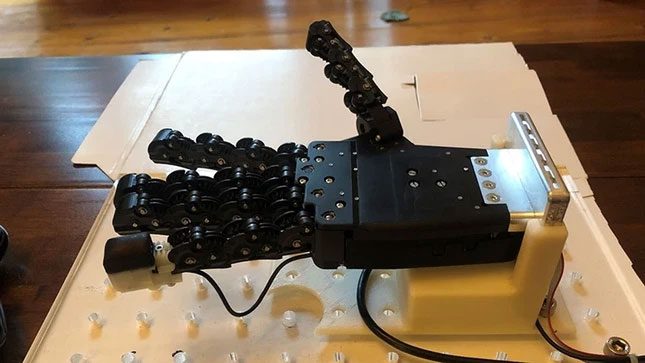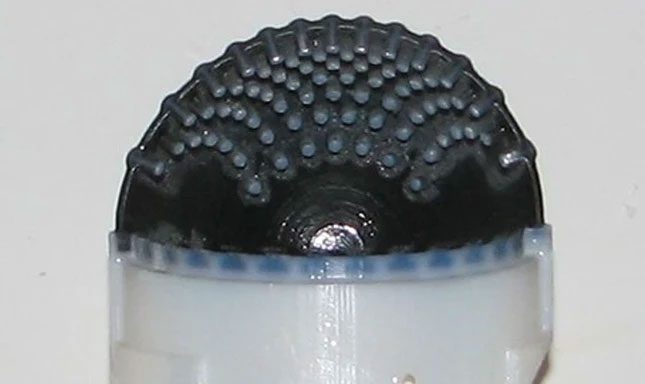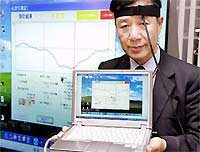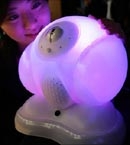Scientists have created a robotic hand that uses artificial neural signals to provide a sense of touch similar to, or even better than, human skin.
To develop this robotic hand, researchers studied how to arrange a complex structure before employing 3D printing to create the precise shape of the object.
Among the five fingers of the robotic hand, one fingertip has the ability to sense tactile sensations (the feelings experienced through touch and skin contact) similar to a real human finger.
Essentially, for humans, tactile nerves transmit signals from the nerve endings in the fingers to the brain for processing. These are known as sensory receptors, which can signal pressure and the shape of an object, helping us visualize many characteristics.


The artificial fingertip can provide a sense of touch like a real hand.
However, it is extremely challenging to create an artificial product that can simulate the delicate sensations found in human hands. Therefore, during the research, scientists carefully monitored the neural perception indicators.
The research team conducted dozens of experiments involving interactions between the robotic finger and various objects. The results showed that the neural perception waves from the robotic finger matched remarkably well with the neural data from the human brain.
This artificial finger can even recognize tiny and complex patterns, indicating that it can perceive sensations with a slight edge over human fingers.
While the team is pleased with their results, they also pointed out the inherent drawback of robotic products, which is a lack of flexibility. Although the neural perception has been accurately simulated, the sensations from the robotic finger still exhibit a slight delay. The project leader suspects that this issue arises from the 3D printing materials being slightly thicker than real human skin.
Nevertheless, this represents an exciting development in the field of robotics. It has the potential to revolutionize robotics and the production of prosthetic limbs for medical use.




















































